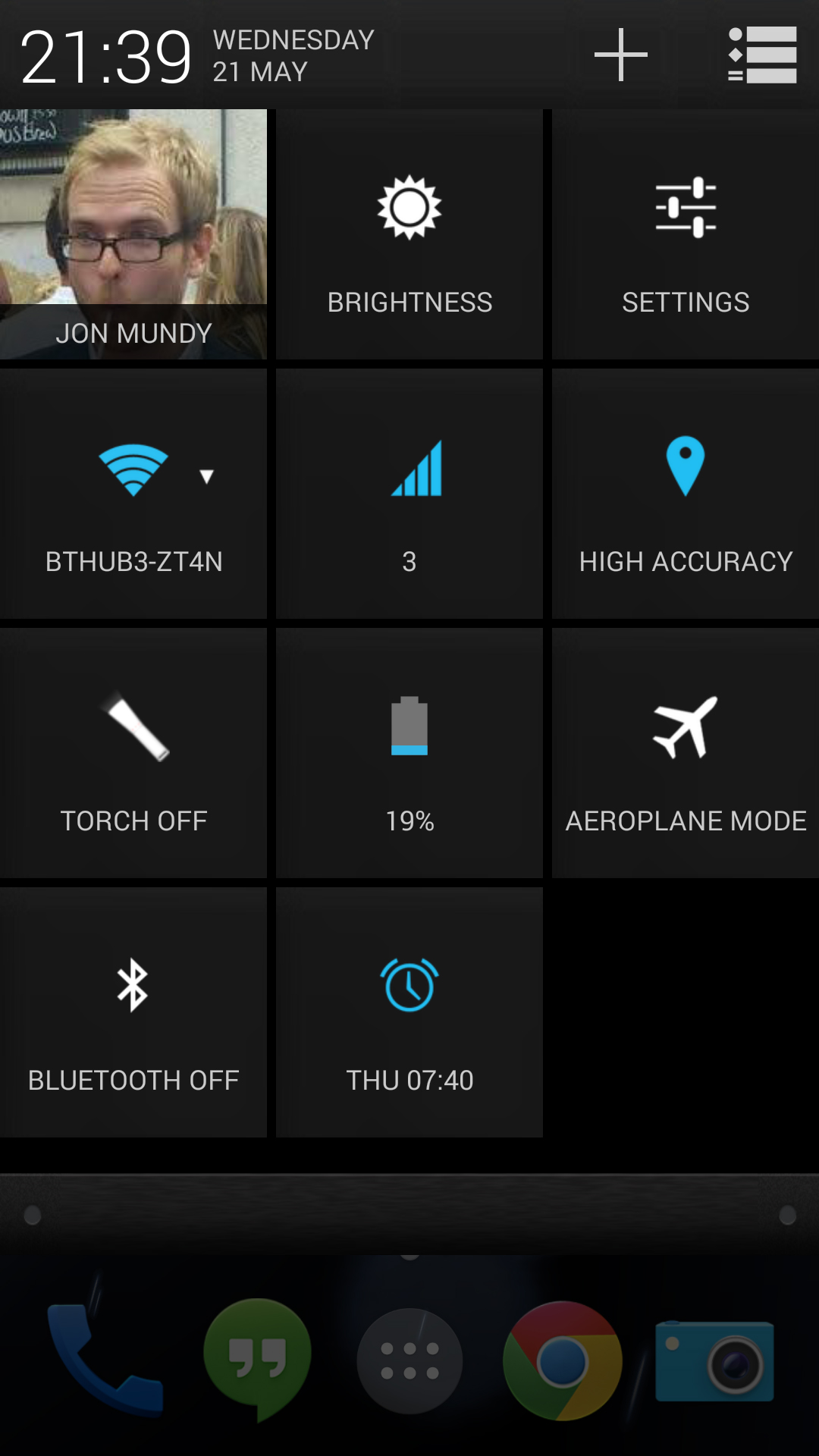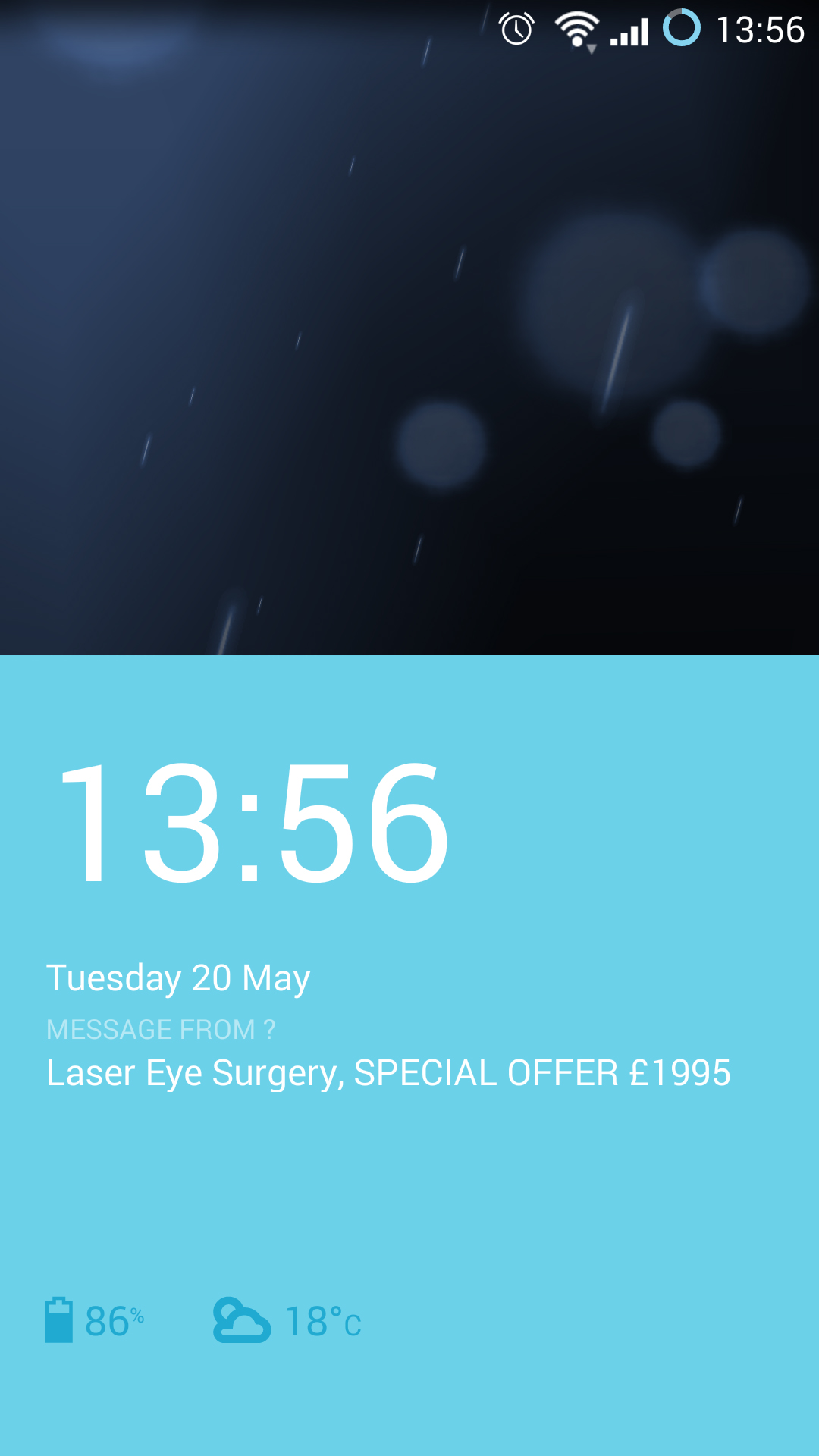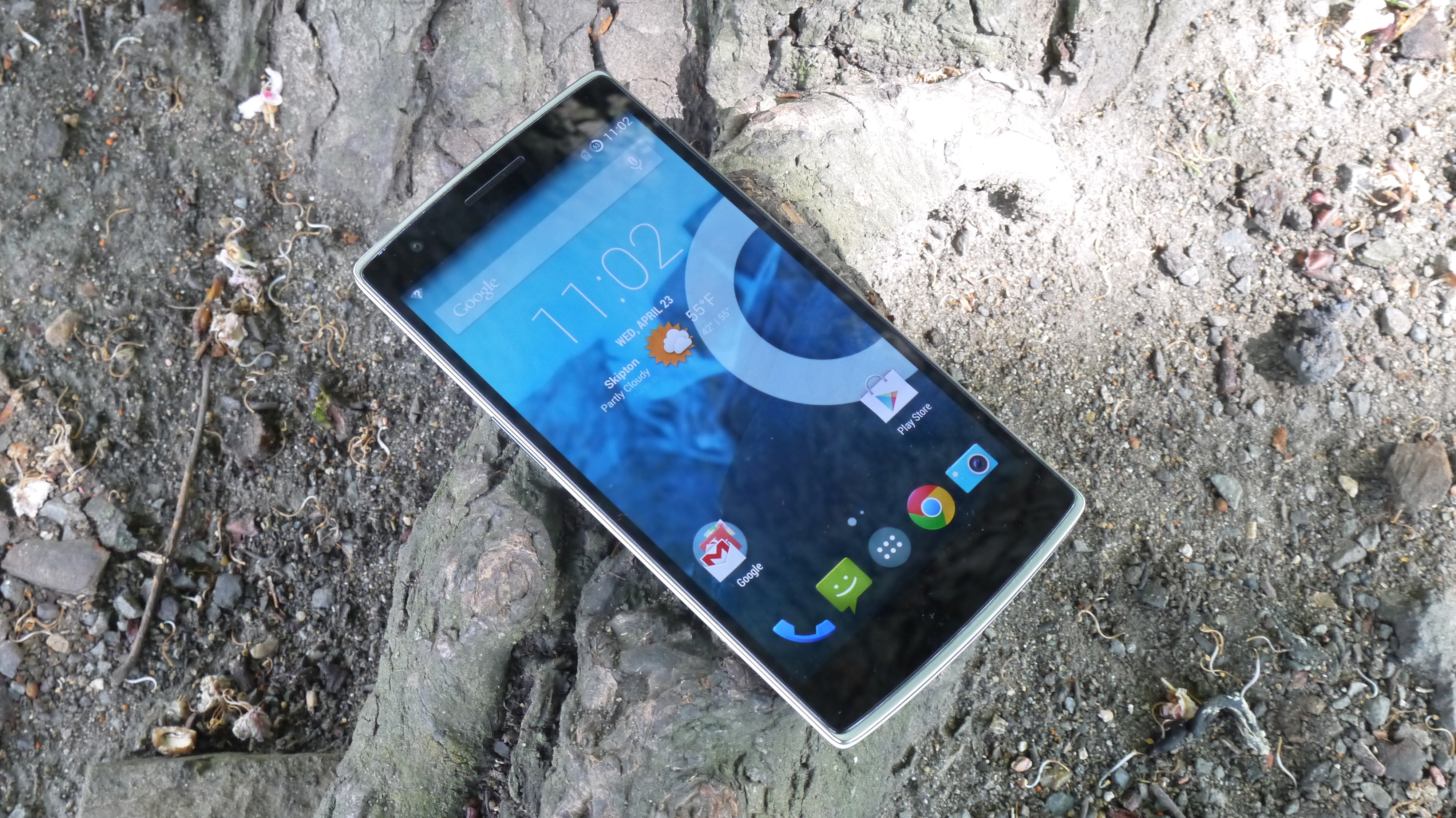Why you can trust TechRadar
The OnePlus One's CyanogenMod software is, by it very definition, an amateur effort. But don't let that fool you.
It has significantly fuller-features and is more polished than the vast majority of Android-based skins I deal with from top handset manufacturers.

At a base level that's because Android has been allowed to shine through bright and clear. CyanogenMod's developers and custodians evidently realise that Google's OS is already a thoroughly refined and pleasant-to-use operating system, and that layering a bulky UI on top of it isn't just unnecessary - it's downright detrimental to the experience.
Pick up the OnePlus One and briefly browse through its home screens and app menu, and you won't notice a massive difference from the stock Android experience found on the Nexus 5. And that's a good thing.
There's that familiar dual drop-down menu set-up that enables to you access your latest notifications and a settings shortcut menu with a directed swipe. There's also a familiar multitasking menu that offers thumbnail shortcuts to the most recently accessed apps.
The default lock screen is a little different and, in dropping Android's radial app shortcut system, a little less useful to boot. But once again, you can change that back in the settings menu.
It's in the settings menu where CyanogenMod really shows its hand. You can tweak everything, from the function of the hardware buttons to the colour, pulse, and purpose of the notification light.

You can customise the hue, saturation, contrast and intensity of the display, change the nature of the pulldown notification menus, and switch to a different default font.
This level of customisation is never thrust in your face, and it never confuses the OnePlus One's day-to-day usability. It's all just there, tucked away in the bowels of the OS, ready to be discovered or ignored as you see fit.
Oh, and credit must go to yet another manufacturer implementing a double-tap to wake system. On such a large phone without a physical home button, it's a massive plus.
On the slightly negative side, I found that the OnePlus One's gesture shortcuts, which initiate certain functions by drawing patterns on the screen, were a little too easy to set off inadvertently.
On a couple of occasions I found that Google Music started playing my most recent track whilst putting the phone in my pocket or laying it down. This is done with a two-fingered downwards swipe, which seemed to be a little too easy to do during normal handling.

The same thing happened with the torch app, which flicks the camera flash on when you draw a 'V' shape on the screen. Again, it's easy to activate by mistake.
As is the case with most software features here, though, these two gesture shortcuts (along with the ability to jump to the camera app by drawing a circle) can be turned off in the settings menu if you find them to be over-responsive.
If you're not a fan of the style you can always switch the look and feel of the UI via the Themes Showcase app, where you'll be able to download a variety of paid-for and free themes.
The OnePlus One already comes with a second, slightly more colourful, theme installed which you can switch to in the settings menu. If you don't want everything to change you can select aspects to tweak in the interface including backgrounds, fonts, sound packs and app icons.
Because CyanogenMod has left the Android UI relatively unmolested, it feels extremely fast. And with that Snapdragon 801 CPU on board, backed by a generous 3GB of RAM, it is fast.
In my GeekBench 3 tests, the average multi-core score was 3050, which is a little higher than both theSamsung Galaxy S5 and the HTC One M8, both of which run on the same chip, but with only 2GB of RAM compared to the OnePlus One's 3GB.
Those impressive performance figures are shown in general use too. Everything moves along smoothly, whether you're gliding between home screens, watching HD videos, or surfing the web.
On the latter point, booting up the full TechRadar site took just six seconds. That's everything, including adverts, fully loaded up. Your average Android phone would take around ten seconds to achieve that.
Current page: Interface and Performance
Prev Page Key features Next Page Battery life and the essentials